The WaterSense Current Fall 2008
In This Issue VIII, Fall 2008:
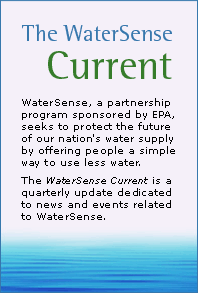 |
In This Issue: |
Interested in getting e-mail updates from WaterSense? Sign up for the WaterSense Current!
WaterSense New Homes Pilot Is Key to Future Savings

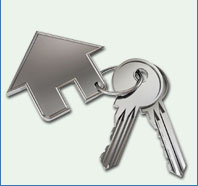
Testing the waters for EPA's upcoming new homes labeling program
The WaterSense label is homeward bound. Soon new homebuyers will be able to identify water-efficient homes just by looking for the WaterSense label.
Seven builders from across the country will help EPA demonstrate its draft new homes labeling specification by building about 50 homes to meet the WaterSense new home draft water-efficiency criteria. Each builder will construct at least one home to the draft specification by December 2008 and provide feedback to help inform the specification process. Once the spec is finalized, EPA will invite builders around the country to join WaterSense and construct WaterSense labeled new homes.
Homes built during this pilot will be designed to save water inside and out. They will include WaterSense labeled toilets and faucets, ENERGY STAR qualified clothes washers and dishwashers, and efficient plumbing systems, landscape design, and irrigation systems (if included in the new home package). Homeowner education is another important part of the new homes program. Builders must develop and provide homeowners with a manual that explains proper use of all water-using equipment or controls in the house and yard.
Builders and homeowners in the arid Southwest face water-efficiency challenges different from those in, say, the Northeast. That's why EPA selected builders from a variety of climates to participate in the pilot:
- Anderson Homes—Raleigh and Chapel Hill, North Carolina
- Aspen Homes of Colorado—Windsor, Colorado
- Cleantech Homes—Beverly, Massachusetts
- Dorn Homes—Tubac, Arizona
- GreenLife Homes LLC—West Olive, Michigan
- Nappier & Turner Construction Co., Inc.—Hendersonville, North Carolina
- Tim O'Brien Homes, Inc.—Waukesha, Wisconsin
EPA expects homes built to the draft standard to be about 20 percent more efficient than similar new homes, saving approximately 10,000 gallons of water per year. That's enough to make buyers in today's market click their heels and say, “There's no place like a WaterSense labeled home.”
WaterSense labeled new homes are expected to save about 10,000 gallons of water per year when compared to other new homes—that's enough water to fill a backyard swimming pool.
A Day in the Life of a Drop
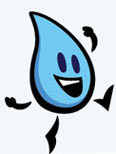
As students find themselves awash in new information this fall, it's a great time to teach them why it's important to save all this H20. Teachers can find ample information on this topic through EPA's new water-efficiency educational materials.
Elementary school teachers will find the EPA Office of Water's A Day in the Life of a Drop curriculum particularly useful. This set of activities is designed to help students in grades 3 through 5 understand the connections between the source of the water they use and the ways their water use habits affect the environment and human health. Key concepts in the lesson are water efficiency, watersheds, water uses, drinking water sources, and wastewater. Students also learn how to reduce their impacts and engage family members. After completing two water savings worksheets, students and families take the Pledge to Filter Out Bad Water Habits, a water conservation checklist, to demonstrate their commitment to saving water for the future.
Want the Real Green Stuff? Look for the WaterSense Label
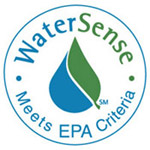
It seems like everyone wants a piece of the green market these days. In North America alone, more than 84 “eco-labels” appear on products asserting various green claims. But many of these labels come with vague claims and little testing or oversight. Given the potential for customer confusion, how can a conscientious individual identify the true eco-products from imitators?
For those interested in saving water, the WaterSense label provides a reliable mark to help consumers identify products that save water and perform well. Unlike many other eco-labels, the WaterSense label is backed by third-party certification in order to ensure that every product that bears the label has met EPA's criteria for both water efficiency and performance. Any product that bears the WaterSense label has been independently tested to use about 20 percent less water and perform as well as or better than conventional models.
Many “green” claims and labels are placed on products by organizations as a marketing ploy to increase sales by appealing to eco-minded consumers today. Because the WaterSense program is sponsored by EPA, consumers know that the label carries the credibility of an environmental agency whose mission is to protect human health and the environment.
EPA created WaterSense to protect water supplies for future generations, and choosing products with the WaterSense label helps you make more than a drop of difference.
Water Waster vs. Water Winners
Water Waster: Lance Armstrong has been a
role model for people everywhere with his courageous fight against
cancer and his seven Tour de France wins; however, there's
one title that might not make him proud. Lance's Spanish-colonial
home in Austin, Texas, holds the title as one of the city's
biggest
water-guzzling abodes |
 |
Water Winners: EPA salutes our first-ever 2008 WaterSense Partners of the Year for their demonstrated dedication to promoting water efficiency across the nation. The 2008 Partners of the Year include:
These winners know how to make every drop count! |
 |
The True Cost of Water
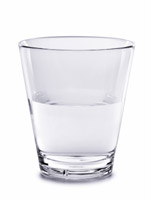
It's a story more complicated than it first appears. A drought looms. A community conserves. And then, even though less water is being used, the cost of water rises.
This is the situation facing Atlanta's northern and western suburbs, where regional water wholesaler Cobb County-Marietta Water Authority is increasing rates by about 50 cents per thousand gallons this October. Atlanta communities had cut back water use significantly in response to a record drought in the region that started in 2007.
So what gives?
Beneath the surface, this issue is more complicated than it first appears. These Atlanta suburbs, like most communities in America, had not been paying the true cost of water.
In general, the price of water in the United States has little to do with supply and demand. Municipalities and regulators typically set rates as low as possible, so much so that 30 percent of all water utilities operate at a loss or a deficit. Often water rates will increase for a multitude of reasons.
Consider this: the American drinking water infrastructure network spans more than 700,000 miles—more than four times longer than the National Highway System—and in many municipalities, these pipes are more than 100 years old. An EPA study estimates that updating aging water infrastructure could cost nearly $500 billion over the next two decades.
Inevitably, water rates will go up in order to pay for the replacement of old infrastructure, new water treatment technologies for better water quality, and new water infrastructure to support increasing populations. Water efficiency can in fact help utilities save money over the long run by delaying costly capital expansions. And many homeowners may find that through water efficiency, even if they pay more per drop of water, they will still be paying less overall on their water bills than they would have before.
What's more, Atlanta communities were asked to take drastic, necessary measures to reduce water use well beyond water efficiency or conservation. “What is painting efficiency in a bad light in the Southeast is the failure to recognize the difference between emergency response and efficiency. The extreme watering restrictions and mandated reductions we've experienced in Atlanta are emergency drought management tactics and they have devastating financial ramification just like any natural disaster such as hurricanes or tornados,” said Kathy Nguyen, water-efficiency program manager for Cobb County Water System, the Authority's largest customer. “Efficiency is not about hardship, sacrifice, and mandates and it does not destroy a water system's fiscal plan.”
Finally, tap water is, on the whole, inexpensive. Bottled water costs from 100 times to more than 2,000 times more than tap water. In the Atlanta metro area, the Cobb County rate increase will equate to about $3.25 more for water per month for the average family. In the long run, however, it's still better to protect water supplies and systems for future generations.
Two States Take a Holiday From Taxes
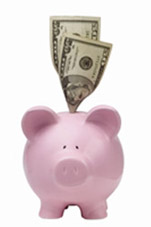
Georgia and Virginia are making water efficiency easier—and more affordable—than ever. For the first time, these states offered sales tax holidays for purchases of WaterSense labeled products. This was done in conjunction with the existing sales tax holiday on ENERGY STAR qualified products.
In early October, Georgia
completed a four-day state and local sales tax exemption![]() on WaterSense labeled products such as toilets, bathroom sink faucets,
and faucet accessories (such as aerators). As part of the effort
to promote WaterSense labeled products, EPA, the state of Georgia,
and several WaterSense partners, including Kohler Co., The Home
Depot, and Cobb County Water System, hosted an educational event
on October 2 featuring a “water-efficient, luxury mobile public
restroom” to demonstrate to Atlanta area residents how improving
water efficiency in bathrooms can be done without sacrificing quality.
From October 10 to 13, the state of Virginia
also held a state-wide sales tax holiday
on WaterSense labeled products such as toilets, bathroom sink faucets,
and faucet accessories (such as aerators). As part of the effort
to promote WaterSense labeled products, EPA, the state of Georgia,
and several WaterSense partners, including Kohler Co., The Home
Depot, and Cobb County Water System, hosted an educational event
on October 2 featuring a “water-efficient, luxury mobile public
restroom” to demonstrate to Atlanta area residents how improving
water efficiency in bathrooms can be done without sacrificing quality.
From October 10 to 13, the state of Virginia
also held a state-wide sales tax holiday![]() for ENERGY STAR qualified appliances and WaterSense labeled bathroom
sink faucets, faucet accessories, and toilets.
for ENERGY STAR qualified appliances and WaterSense labeled bathroom
sink faucets, faucet accessories, and toilets.
In addition to the up-front cost savings provided by the sales tax holiday, WaterSense labeled products use less water, and can cost less to operate, than older models. By installing these products, a family of four can save thousands of gallons of water and more than $90 per year on water bills. By providing an additional incentive to upgrade your bathroom and fixtures, these tax holidays make a smart choice for your wallet—and the environment.
Partner Profile: GreenPlumbers USA
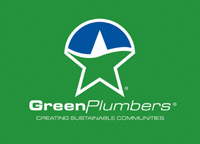
The WaterSense Current periodically profiles outstanding WaterSense partners and their achievement in advancing water efficiency and water-efficient products and practices.
GreenPlumbers USA, a WaterSense partner since April 2008, is an innovative, national training and accreditation organization that assists plumbers in understanding their role in the environment and public health. The organization's goal is to train plumbers to promote the benefits of water efficiency and the associated reductions of greenhouse gas emissions. So far, GreenPlumbers USA has completed more than 65 workshops and has trained more than 2,200 plumbers.
GreenPlumbers USA works with local and state jurisdictions, utilities, and water agencies to carry out its workshops. The training consists of a five-part accreditation in environmental and technical issues including climate care and water-efficient technology. Once they have completed their training, accredited plumbers can assist homeowners and businesses with monitoring their water and energy consumption and determine the most efficient products and appliances for their current and future needs.
The GreenPlumbers 50-point environmental household inspection
report, for example, helps homeowners work out in detail how much
water they currently use around the home. The plumbers then discuss
various water-saving and environmental options for each specific
household. You can learn more about GreenPlumbers
USA![]() on the organization's Web site.
on the organization's Web site.




